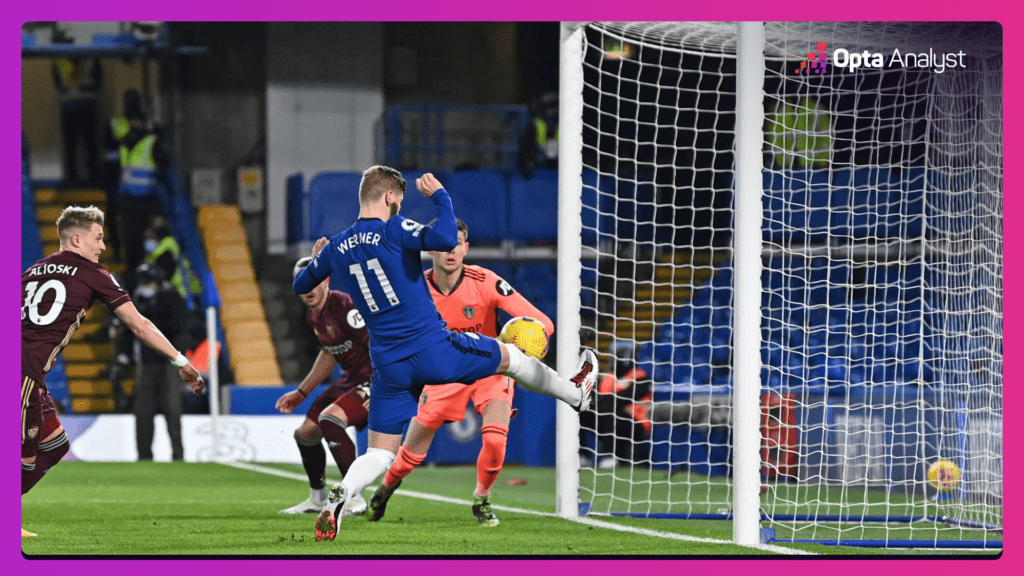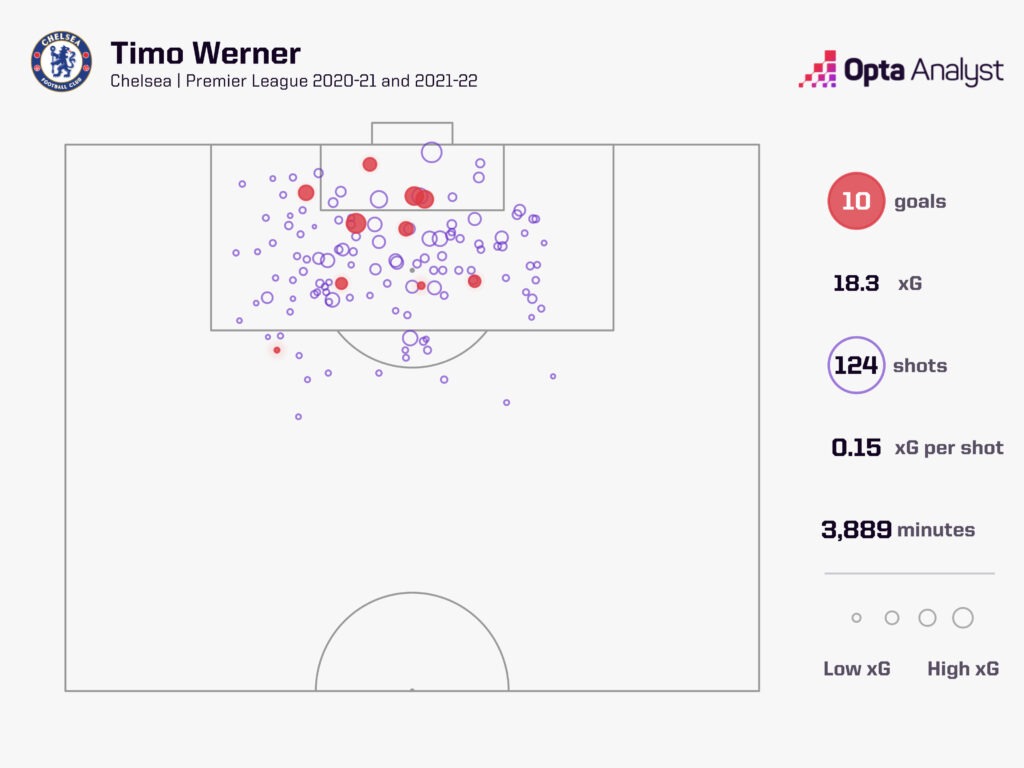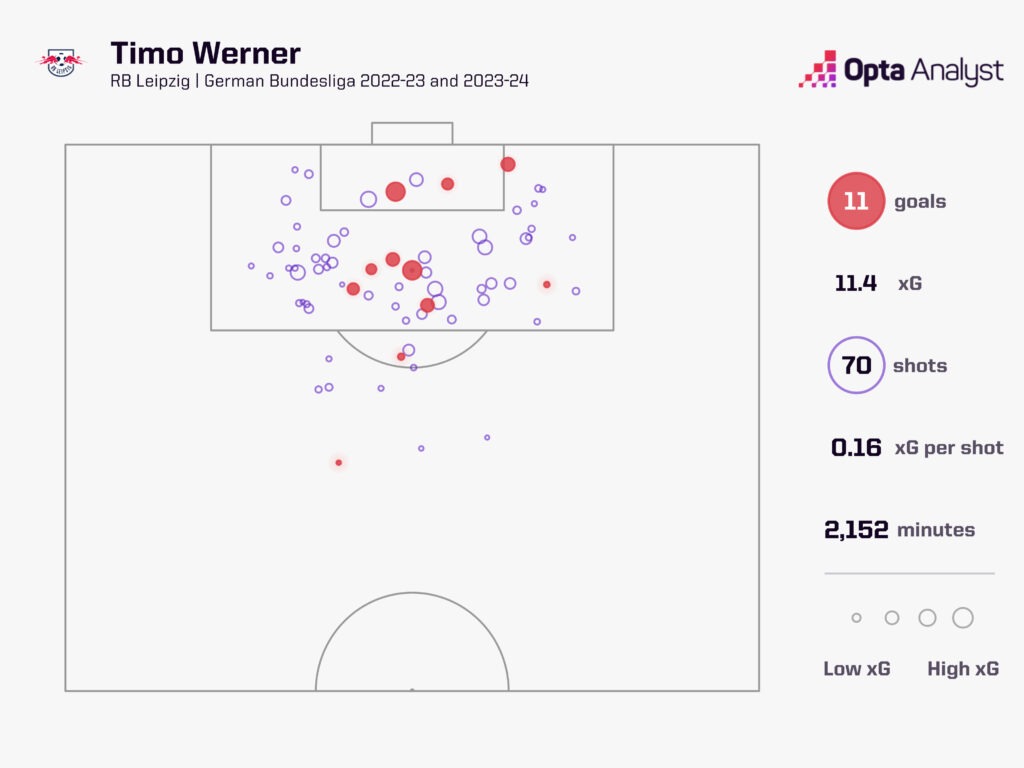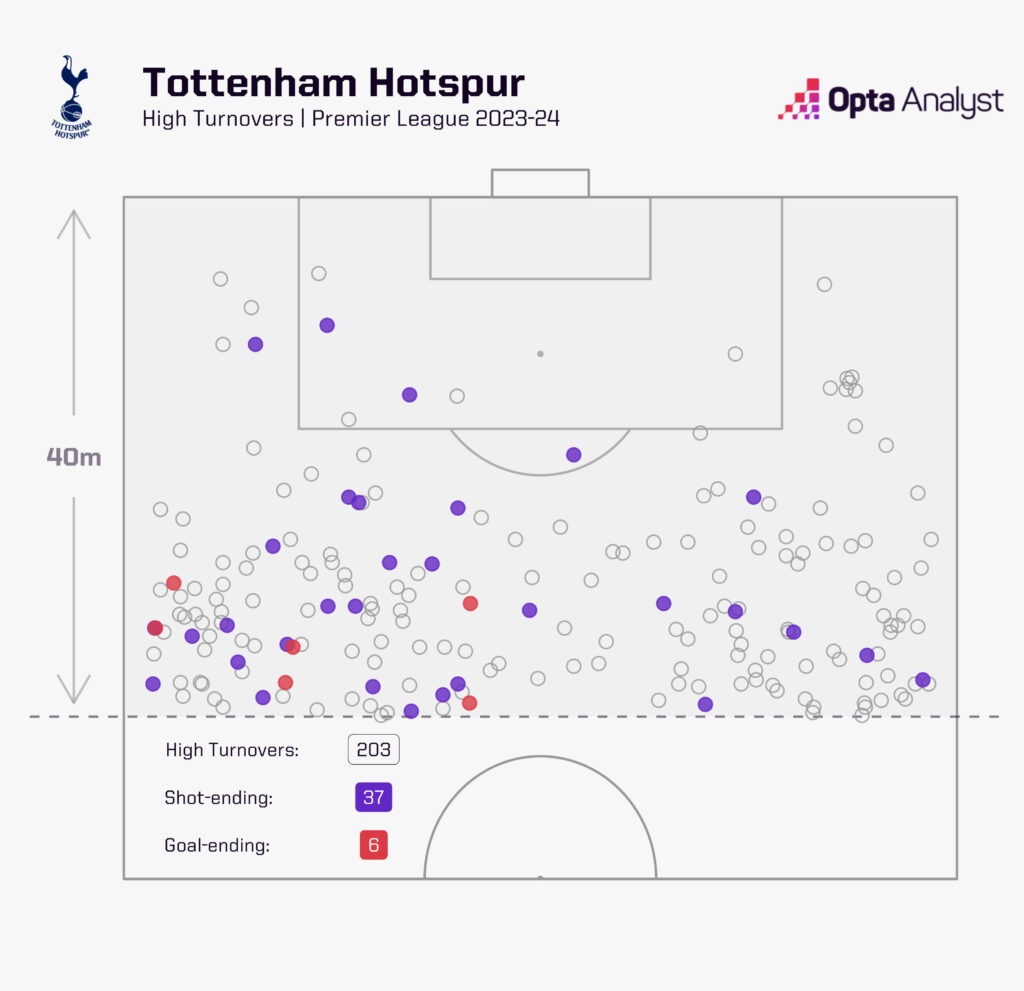Tottenham have completed their first signing of the January transfer window, with a player known as a Chelsea flop joining on loan. Here, we look at why signing Timo Werner might actually work out for Ange Postecoglou.
Given Timo Werner is known to Premier League watchers as a striker who can’t finish, there hasn’t been much clamour for his return. In the 18 months since he left Chelsea, there can’t have been many problems to which many fans thought the German forward was the answer.
And yet, when news broke last week that Tottenham were looking to complete a loan deal for Werner, it strangely made a lot of sense.
Tottenham have been contending with a barely believable availability crisis this season, with attacking players in James Maddison, Ivan Perisic and Alejo Véliz all currently out, and star forward and captain Son Heung-min now likely missing for a month or more on international duty at the Asian Cup with South Korea. Their attacking ranks have been depleted to such an extent that the ineffective Bryan Gil was their only senior, match-fit attacker on the bench for the FA Cup win over Burnley on Friday.
If the names on the teamsheet didn’t already make it clear, their blunt attacking display in that game showed how much Spurs need another attacking option available.
Werner isn’t perfect, nor is he going to be match fit, having played a total of just 250 minutes in the Bundesliga and UEFA Champions League for RB Leipzig this season, and having made only two substitute appearances totalling 39 minutes since October.
His numbers from his time at Chelsea tell the story that we all remember: of a player devoid of confidence who was either ill-suited to the Premier League or struggled to deal with the expectations of a hefty price tag after his £47.5 million move. Werner scored just 10 Premier League goals in two years in England.
In that time, he played 3,889 minutes of top-flight football, meaning he averaged a goal every 389 minutes. That’s a goal roughly every six and a half hours, or every 4.3 football matches.

He missed chances at an alarming rate. He had shots worth 18.3 expected goals, with his underperformance compared to his xG (8.3) representing the worst finishing record by any Premier League player over those two seasons (2020-21 and 2021-22).

Another way of looking at those numbers, though, would be to focus on the impressive consistency with which Werner got into positions to threaten the opposition’s goal. In fact, during his time in England, he ranked 10th for non-penalty xG per 90 minutes played (0.42) of players to play at least 2,500 minutes. His movement, work rate and pace led to lots of chances, even if he doesn’t finish them very well.
Although his return to Leipzig hasn’t been entirely successful, not least because he has lost his place in the team this season, there have been some notable improvements. His non-penalty xG per 90 has risen ever so slightly (0.44) – putting him seventh in the Bundesliga (min. 2,000 minutes played) – and, crucially, he scored far more efficiently. His 11 goals came from just 11.4 xG – meaning he scored at roughly an average rate – scoring every 195 minutes on average. Neither are particularly outstanding rates, but Werner’s finishing simply isn’t world class. As time has gone on, the 28 Bundesliga goals he scored from 21.3 xG in 2019-20 appear increasingly like a hot streak rather than a sign of an elite finisher.

Tottenham manager Ange Postecoglou will of course hope Werner can chip in with some goals, particularly given Brennan Johnson has just one in 14 appearances since joining for £50m from Nottingham Forest in the summer. Meanwhile, there is no banking on Richarlison extending his current run of five goals in five league games. But goals won’t have been the only (or even the main) reason Spurs have moved for Werner.
The potential upside for little risk makes the deal a no-brainer, with Tottenham bringing in a forward who has Premier League experience on a relatively cheap loan that requires them only to cover the player’s wages. If it goes well, they have the option to buy him for around £15m.
Although Postecoglou surely wouldn’t have turned down the opportunity to spend £100m on the perfect striker this January, financially that isn’t an option for Spurs right now. And given they invested so heavily in recent years on Johnson and Richarlison, what they really need in this window is a player to compete with the attackers already in the squad rather than jump straight ahead of them in the pecking order and stunt 22-year-old Johnson’s development and cause Richarlison’s value to drop.
The hope will be that Werner’s tireless running, clever movement and breathtaking pace suit Postecoglou’s style of football so well that he slots in fairly seamlessly. He brings an element of chaos to attacks; having hit a top speed of 22.2 mph while at Chelsea, he was among the 20 fastest players in the league across his two years in London. All too often he was too keen to use his pace to get in behind the opposition, though, caught offside 0.9 times per 90, the fourth-highest rate among players to play at least 2,500 minutes in that time. That will be something Postecoglou will have to improve.
Postecoglou has his team press relentlessly and attack quickly and directly on the transition if they have the opportunity to catch the opposition when they are out of shape. That should suit Werner.
Spurs have the second-lowest PPDA (passes per defensive action) in the Premier League this season (9.7), indicating they are the top flight’s second-most proactive team when out of possession. They are also hugely effective with their pressing, ranking first for high turnovers – regains made within 40m of the opposition’s goal line – (203), second for high turnovers leading to a shot (37), and joint first for high turnovers leading to a goal (6). While Son, who leads the Premier League this season for pressures in the final third leading to a turnover (71), is away on international duty, Spurs’ forwards will need extra help to maintain their impressive pressing numbers.

When attacking over longer distances, though, Spurs still have some improving to do, and this is where Werner’s pace and ability to carry the ball up the field at speed could prove most useful. Spurs have had 50 direct attacks – defined as an open-play sequence that starts just inside their own half, has at least 50% movement towards the opposition’s goal, and ends in a shot or touch in the penalty area – this season, which is the Premier League’s second-highest tally behind Liverpool (55).
However, Spurs have scored only one goal from these attacks, with 11 teams having scored more than them. Liverpool have scored five such goals, while Brighton have scored four goals from just 24 direct attacks. That’s one goal every six direct attacks compared to one every 50 for Spurs.
Werner is largely thought of in England as an overrated striker who can’t score goals and flopped at Chelsea, but he now has another chance to prove himself in the Premier League. There is a quality player in there (remember, he did win the Champions League with Chelsea, starting in the final and creating space for Kai Havertz to run through on goal and score the winner), and Postecoglou appears to be adept at getting the most from his players.
Werner might end up leaving London once again with his reputation in England in much the same state, but there are also some positive reasons to believe things could turn out differently for him this time around.
Enjoy this? Subscribe to our new football newsletter to receive exclusive weekly content. You should also follow our social accounts over on X, Instagram, TikTok and Facebook.
